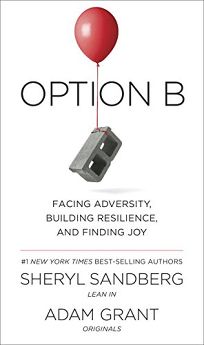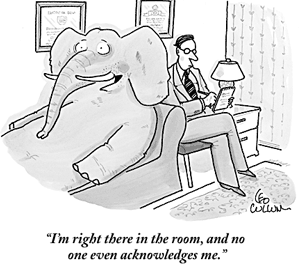“Resilience is not a fixed personality trait. It’s a lifelong project.”
 Sheryl Sandberg, CEO of Facebook along with Adam Grant, psychologist, have given the world a gift. Option B: Facing Adversity, Building Resilience, and Finding Joy is for all of us, but especially it’s for those of us who, through various kinds of circumstances, are learning how to navigate through a life we didn’t plan on.
Sheryl Sandberg, CEO of Facebook along with Adam Grant, psychologist, have given the world a gift. Option B: Facing Adversity, Building Resilience, and Finding Joy is for all of us, but especially it’s for those of us who, through various kinds of circumstances, are learning how to navigate through a life we didn’t plan on.
Sandberg refers to this other life, the one we didn’t plan on, as Option B. She reminds all of us, old and young, that no matter how good we have it, all of us are living some form of Option B.
Eleven years after Sheryl Sandberg married the man of her dreams, and crafted a beautiful life, raising a son and daughter, her husband Dave, died while on a trip to Mexico. Sandberg flew home, devastated and shocked that she had to tell her children their father was not coming home. The overwhelming trauma of her husband’s death threatened to undo her. Only weeks after Dave’s death, while Sheryl was making a plan for someone to stand in for Dave during a father-child activity, she cried out, “But I want Dave.'” Her friend wisely put his arm around her and said, “Option A is not available. So let’s just kick the shit out of Option B.”
Over time, Sandberg did start kicking the shit out of Option B, and decided to write a book about it with her friend, Adam Grant. Using research, other people’s life stories, and her own personal experience Sandberg weaves her way through the various skills people use to face adversity, build resilience, and find joy. With chapter titles such as Kicking the Elephant out of the Room, Self-Compassion and Self-Confidence, and Raising Resilient Kids how could we go wrong? Option B teaches us so much about living life and being resilient.
At the onset of the book, Sandberg explains:
We plant seeds in the way we process negative events. After spending decades studying how people deal with setbacks, psychologist, Martin Seligman found that three P’s can stunt recovery: (1) personalization- the belief that we are at fault; (2) pervasiveness – the belief that an event will affect all areas of our life; and (3) permanence – the belief that the aftershocks of the event will last forever. The three P’s play like the flip side of the pop song “Everything Is Awesome” – “everything is awful.” The loop in your head repeats, “It’s my fault this is awful. My whole life is awful. And it’s always going to be awful.
Sandberg explains that it’s not only death that forces us into Option B, but many different kinds of tragedy, including divorce,the loss of a job, financial setbacks, and other traumatic events such as hurricanes and earthquakes, metaphorical and literal. She explains that even if you’re a relatively confident person, trauma has a way of squashing your confidence and leaving you reeling with insecurities, sometimes even afraid of your own shadow. She encourages us to become more self-compassionate, to give ourselves the compassion we would readily extend to someone else, and to rebuild confidence one step at a time.
She is quick to suggest that turning to God is one of the most helpful things we can do when faced with traumatic events. Many people find great strength from their faith traditions, and gain better perspective, and more awareness by cultivating their spiritual life.
Sandberg encourages people to journal, to avoid the idea that if we talk about it we’ll make it worse. The chapter on The Elephant in the Room was spot on and super insightful.
By staying silent, we often isolate family, friends, and coworkers. Even under ordinary circumstances, being alone with your thoughts can be uncomfortable….
Until we acknowledge it, the elephant is always there. By ignoring it, those who are grieving isolate themselves and those who could offer comfort create distance instead. Both sides need to reach out. Speaking with empathy and honesty is a good place to start. You can’t wish the elephant away, but you can say, “I see it. I see you’re suffering. And I care about you.”
My two favorite chapters were, Bouncing Forward, and Raising Resillient Kids.
From Bouncing Forward she writes,
Psychologists went on to study hundreds of people who had endured all kinds of trauma: victims of sexual assault and abuse, refugees and prisoners of war, and survivors of accidents, natural disasters, severe injuries, and illnesses. Many of these people experienced ongoing anxiety and depression. Still along with these negative emotions there were some positive changes. Up to that point, psychologists had focused mostly on two possible outcomes of trauma. Some people struggled: they developed PTSD, faced debilitating depression and anxiety, or had difficulty functioning. Others were resilient: they bounced back to their state before the trauma. Now there was a third possibility: people who suffered could bound forward.
When we face the slings and arrows of life, we are wounded and the scars stay with us. But we can walk away with greater internal resolve.
Sandberg concludes Bouncing Forward with this hopeful thought:
Although it can be extremely difficult to grasp, the disappearance of one possible self can free us to imagine a new possible self.
The chapter on Raising Resilient Kids is equally helpful.
Building resilience depends on the opportunities children have and the relationships they form with parents, caregivers, teachers, and friends. We can start by helping children develop four core beliefs: (1) they have some control over their lives; (2) they can learn from failure; (3) they matter as human beings; and (4) they have real strengths to rely on and share.
Reading the above four core beliefs alone was worth the entire book. As a mother, I’m constantly looking for helpful tips and suggestions and solid teaching on how to help my children grow strong and confident in this world.
Option B: Facing Adversity, Building Resilience, and Finding Joy is worthy of your time.
See below to share this post.
I’d love for you to sign up for my newsletter.


